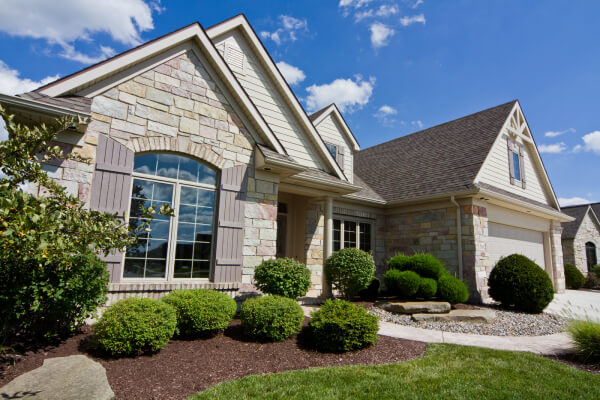Choosing the right roof for your home can seem like a daunting task with so many styles to consider. Whether you’re embarking on a new build or replacing an aging roof, gaining a clear understanding of the various residential roof styles is key to making a choice that suits both your practical needs and aesthetic preferences. Here’s a breakdown of the most popular options to help guide you toward the best fit for your home.
Gable Roofs
Gable roofs are perhaps the most recognizable residential roof style. They feature two sloping sides that meet at a ridge, creating a triangular shape. This design is popular because it’s simple, cost-effective, and works well in various climates.
Pros:
- Gable roofs are straightforward to construct, which keeps costs low. They also work with many types of roofing materials, from shingles to metal.
- The steep slope allows for better attic ventilation and more space.
- Ideal for regions with heavy rainfall or snow, as water and snow easily slide off.
Cons:
- The triangular shape can be vulnerable to wind damage, especially in areas prone to hurricanes or tornadoes.
Hip Roofs
A hip roof has four sides, all sloping downward towards the walls, usually with a fairly gentle slope. This style is known for its stability and ability to handle strong winds and heavy snow.
Pros:
- Hip roofs are more stable than gable roofs, making them ideal for areas with high winds.
- The four-sided design allows for better insulation, keeping homes warmer in winter and cooler in summer.
- Offers a more symmetrical, polished appearance that complements many home styles.
Cons:
- The complex design requires more materials and labor, increasing the overall cost.
- The sloping sides reduce the usable attic space.
Flat Roofs
Flat roofs are exactly what they sound like—roofs that are almost level, with just a slight pitch to allow for water drainage. They are commonly used on commercial buildings but are also popular in modern residential architecture.
Pros:
- Flat roofs are typically less expensive to install due to the minimal materials and labor required.
- Flat roofs can serve as additional outdoor living areas, such as rooftop gardens or patios.
- The flat surface is perfect for installing solar panels or HVAC units.
Cons:
- Flat roofs require careful drainage planning to prevent water pooling, which can lead to leaks.
- They may require more maintenance to keep them in good condition, especially in areas with heavy rainfall.
Mansard Roofs
Mansard roofs are a type of hip roof with two slopes on each side—the lower slope is much steeper than the upper. This style adds a touch of elegance and is often found in French-inspired homes.
Pros:
- The design allows for a spacious attic or extra living area, perfect for adding a loft or additional bedrooms.
- Provides a sophisticated, classic look that enhances curb appeal.
- Can be adapted to both traditional and modern designs.
Cons:
- The intricate design and additional materials make it one of the more expensive options.
- Requires skilled labor and more time to construct, increasing installation costs.
Shed Roofs
A shed roof, or lean-to roof, is a single-sloping roof plane that extends from one side of the house to the other. It’s a simple, minimalist style that’s often used for home extensions or modern designs.
Pros:
- The simple design means faster installation and lower costs.
- The single slope provides an ideal angle for solar panel installation.
- Offers a sleek, modern aesthetic, perfect for contemporary homes.
Cons:
- May not complement more traditional home styles.
- If not properly installed, water drainage can be an issue.
Making the Right Roof Choice
Selecting the best residential roof style involves considering several factors, including your home’s architectural style, the local climate, your budget, and your personal preferences. If you’re ready to explore your options further or have questions about which residential roof style is best for you, don’t hesitate to contact us. We’re here to help you make the best decision for your home’s unique needs.









